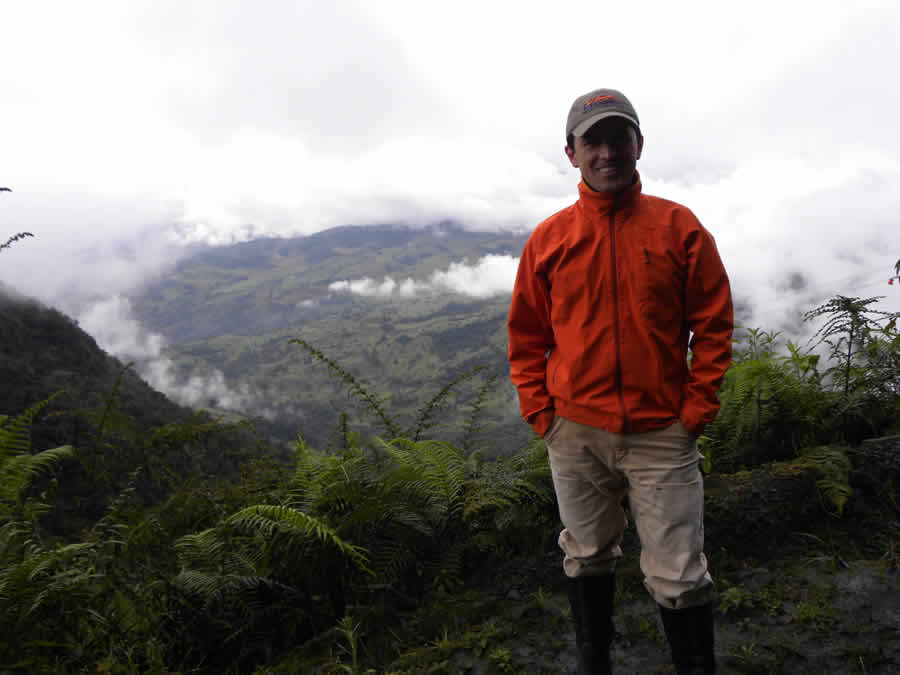
I am a broadly trained geoscientist with experience in watershed hydrology, ecosystem-water-carbon relations, and land-atmosphere interactions. Throughout my entire career as a student, researcher, and now as an assistant professor, I have turned to field-based research to answer fundamental questions in watershed hydrology.
My current research program involves both field-based and modeling methods to link watershed hydrology, climatology, biogeochemistry, and forest ecology, and examine their implications for water quality and nutrient cycling. The ultimate goal of my research is to understand the relationships between the geosphere, the hydrosphere, the biosphere, and the atmosphere, and evaluate how they amplify or mute responses of the earth system to different climate regimes.
One of my research projects is in the Rocky Mountains of Montana. These forested watersheds represent the headwaters of the Missouri River and are considered one of the major sinks for atmospheric carbon in the U.S. My group and I analyze how surface hydrology, snowmelt timing, and summer rains affect the capacity of these forests to sequester and retain atmospheric carbon. We examine the relationship between watershed drainage patterns and landscape and vegetation structures to understand the interactions between the water and carbon cycles in mountainous environments.
I recently started a project in Colombia, South America, to study the effects of land use change on water resources of the paramo ecosystem. The paramo is a neotropical alpine grassland that occurs at elevations above 10,000 feet and it serves as the major water provider for the Andean highlands. Many large Andean cities (i.e., tens of millions of people) depend on paramo water, and the excellent quality of the many rivers descending from the paramo have offered a reliable water source for centuries. Hydrologically, paramos directly modulate the water cycle because of their high storage capacity. Their soil water content is very high due to thick mosses that cover the soil, which can hold three to five times their own weight in water. At the same time, evapotranspiration is low due to low temperatures and high relative humidity. Mossy soils collect water during the wet season and slowly release it during the dry season.
Paramo watersheds are heavily affected by increased tourism and local farming practices, including agriculturally-driven soil burning and intensification of livestock grazing. Along with Steve Thomas, an SNR aquatic ecologist, and Juan Carlos Jaimes, a graduate student in SNR, I am studying these complex physical, biological, and social interactions and the consequences of land use change in the paramo.
During spring break 2012, I traveled to a South American paramo, located above 10,000 feet in the mountains of Colombia. With support from the National University of Colombia, the City of Bogota’s Water Supply System, and Colombia’s National and Natural Park Service, my group and I will begin field activities this coming May to study the effects of land use change on the quality and sustainability of water resources of paramos. Paramo water use includes hydropower, agricultural irrigation at lower elevations, and water supply for industrial and residential purposes for over ten million people. Our project is supported by an existing agreement of academic cooperation between UNL and the National University of Colombia, and it has recently received funding (equivalent to $160,000) from the Administrative Department of Science, Technology, and Innovation of Colombia (COLCIENCIAS). We will continue to look for funding from the U.S. and Colombian governments to understand land use change effects on water quality and sustainability of this and other ecosystems.
-- Diego Riveros-Iregui, Assistant Professor of Watershed Hydrology, School of Natural Resources, University of Nebraska-Lincoln
More details at: http://go.unl.edu/8j9